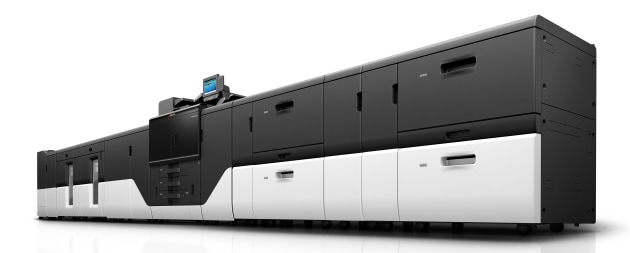Kyocera launches first commercial inkjet printer
Kyocera is launching into the production print market with its first commercial printer, a 150 A4-pages-a-minute cutsheet inkjet printer: the Taskalfa Pro 15000c.
Cutsheet inkjet 150ppm: Kyocera enters production print market with Taskalfa Pro 15000c
The company is no stranger to the commercial print world. Its inkjet print heads are widely used by well-known brands in wide format and direct to garment, but the Tasksalfa Pro 15000c is its first system under its own name.
The company says the new printer will be priced competitively and claims it has the lowest running costs in this sector of the market. The device offers low maintenance, high efficiency, and low energy consumption and 6.3KwH/week typical energy consumption. It provides solutions in an economical way for printing in high quantities.
Jacob Palathingal, senior marketing manager – product at Kyocera Document Solutions Australia, said, “This is a landmark moment for Kyocera, bringing our decades of experience into the production print sector. The Taskalfa Pro 15000c is the innovation created by uniting our trusted experts across the globe. The impressively productive machine provides companies of all sizes with an unrivalled return on investment thanks to its 150 pages per minute and market-leading reliability.”
It prints at 600x600dpi, with paper sizes ranging from A6 to SRA3 and stock weights from 56 to 360gsm. It is targeted at printers producing up to one million A4 pages a month. It can accommodate 14,310 sheets in its paper drawers. Warm up time is less than two minutes.
The printer uses water-based pigment ink, which Kyocera says is environmentally friendly in both manufacturing and disposal.
The company says that while this product launch sees Kyocera move into a whole new area of business, it retains many of the key features that have made the brand successful, one such aspect is the device’s ease-of-maintenance, thanks to the few moving parts that reduce the risk of breakdown and can even be easily replaced by users themselves in many cases without the need for a technician visit.



